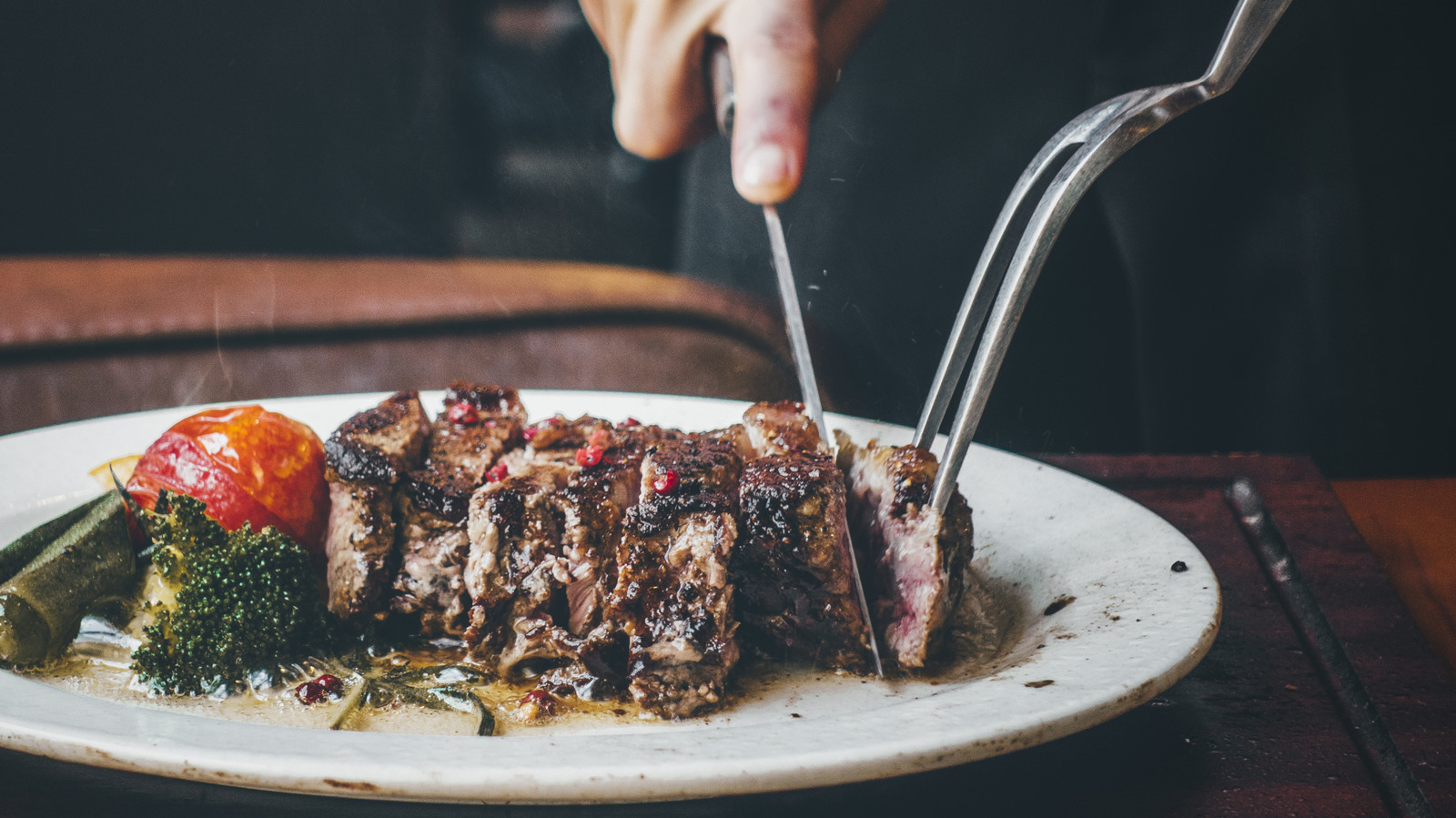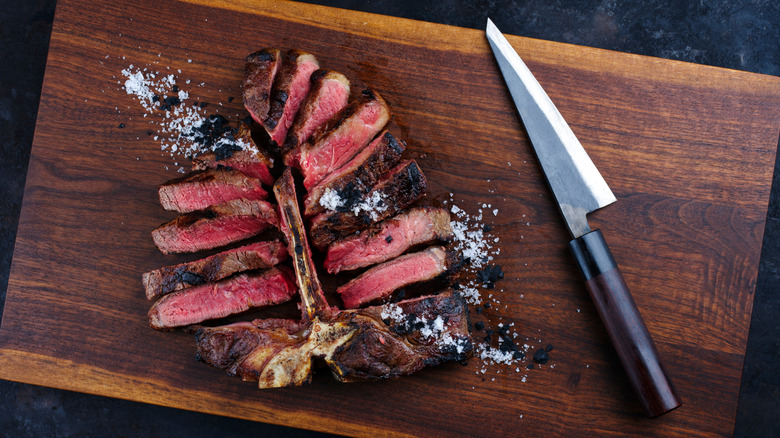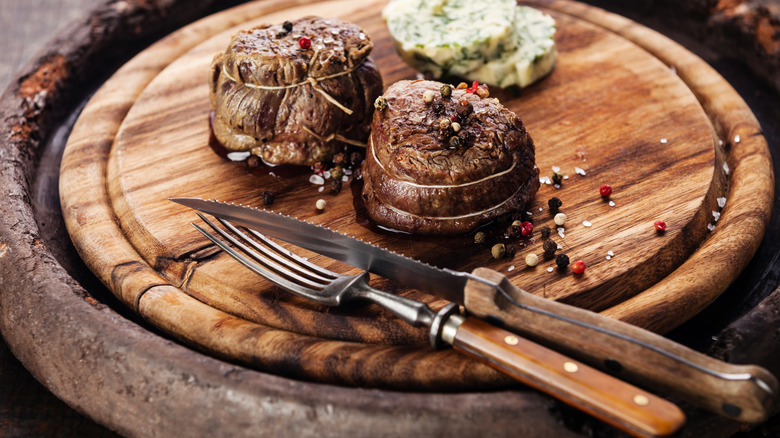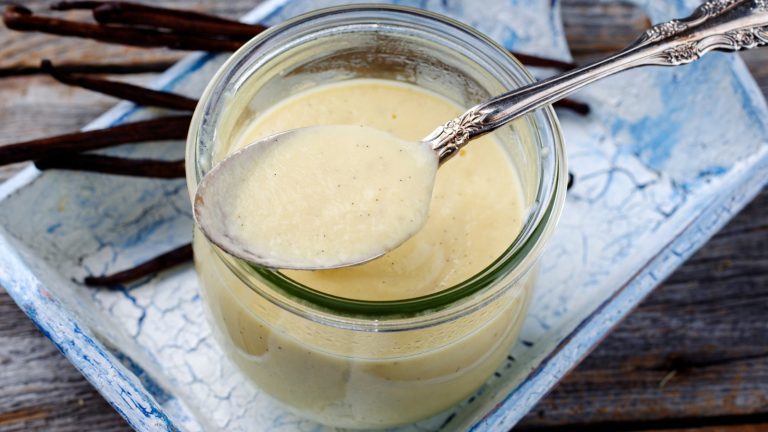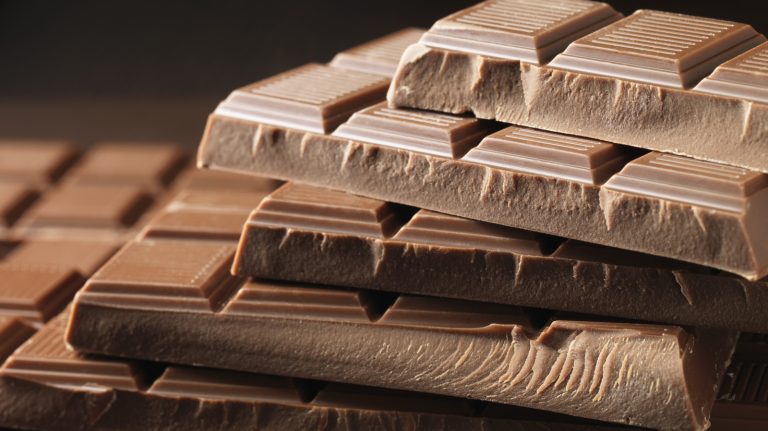Whether to get non-serrated or serrated knives is an important question that has sparked heated debate between professional chefs and culinary enthusiasts. While some will conclude this argument with personal preference, others don’t find that sufficient. After all, every kitchen knife has its purpose in your culinary toolbox, but in the end, there should be an objective answer to help you choose which is ideal for your kitchen and dining experience.
Originally, the steak knife was an evolution of the letter opener when it first made a name for itself after World War II in 1946. After being added to a nationwide survey, researchers found that people simply wanted an elegant knife for dining at home. The first design was a non-serrated, or straight-edge blade, that was both elegant and sharp, catching the eyes of many. Shortly after their debut, steak knives were being advertised at a high asking price of $43.50 (roughly $450 after inflation) in the 1950s (via Mel Magazine). Naturally, cheaper knives gradually entered the market, which were made out of softer metals featuring a serrated blade.
Both styles have stood the test of time, evolving with technology and earning their place at the dinner table. However, the strengths and weaknesses of each knife will reveal why one is a better addition to your kitchen than the other.
The clean-cut benefits of a straight-edge blade with a dulling drawback
When it comes to the original straight-blade design of the non-serrated steak knife, you’ll quickly find people boasting about its clean-cut capabilities. A clean slice through the steak causes less trauma and damage to the meat fibers. This results in a smooth edge that preserves the juicy flavors of the steak. Additionally, the non-serrated knife offers utility in the kitchen with its straight edge design, which is ideal for slicing and dicing fruits and vegetables.
However, this blade has one major drawback: its edge retention. Non-serrated knives become dull faster. Fortunately, it’s recommended that you only need to sharpen your steak knives professionally once a year, though this will vary depending on how often you use your steak knives. However, some might enjoy this as you can learn to sharpen steak knives at home.
The shredding advantages of a serrated knife with one tedious disadvantage
As for the straight edge’s rival, the serrated steak knife, the primary appeal is its ability to cut through tough meats and maintain its sharpness. Although a majority of people prefer medium-rare steaks, 15% of people reported well-done as their steak of choice, according to the Consumer Steak Report. Those who enjoy a chewy bite will have an easy time cutting through with a serrated edge. Furthermore, the serrated blade offers versatility between different cuts of meat, particularly uneven ones. Its tooth-like design grips the surface and tears through the flesh. The knife’s sharpness is preserved since the cutting edges are in the recesses, which stops it from striking the plate.
However, the efficient design comes at an expense. The logistics of gripping and shredding damage the meat fibers, allowing the juicy flavors to pour out on the plate. Although the serrated blade retains its sharpness longer than the straight-edge design, it eventually dulls. A serrated edge requires more complex care, and, while you can sharpen your knife yourself, it’s often best to hire a professional
Ultimately, the choice between non-serrated and serrated will be determined by your food preferences. If you enjoy medium-rare steaks and versatility for fruits and vegetables, the straight-edge design is the superior option. On the other hand, meat eaters who prefer a well-done steak or a myriad of different cuts will enjoy the saw-tooth cutting power of the serrated steak knife.


